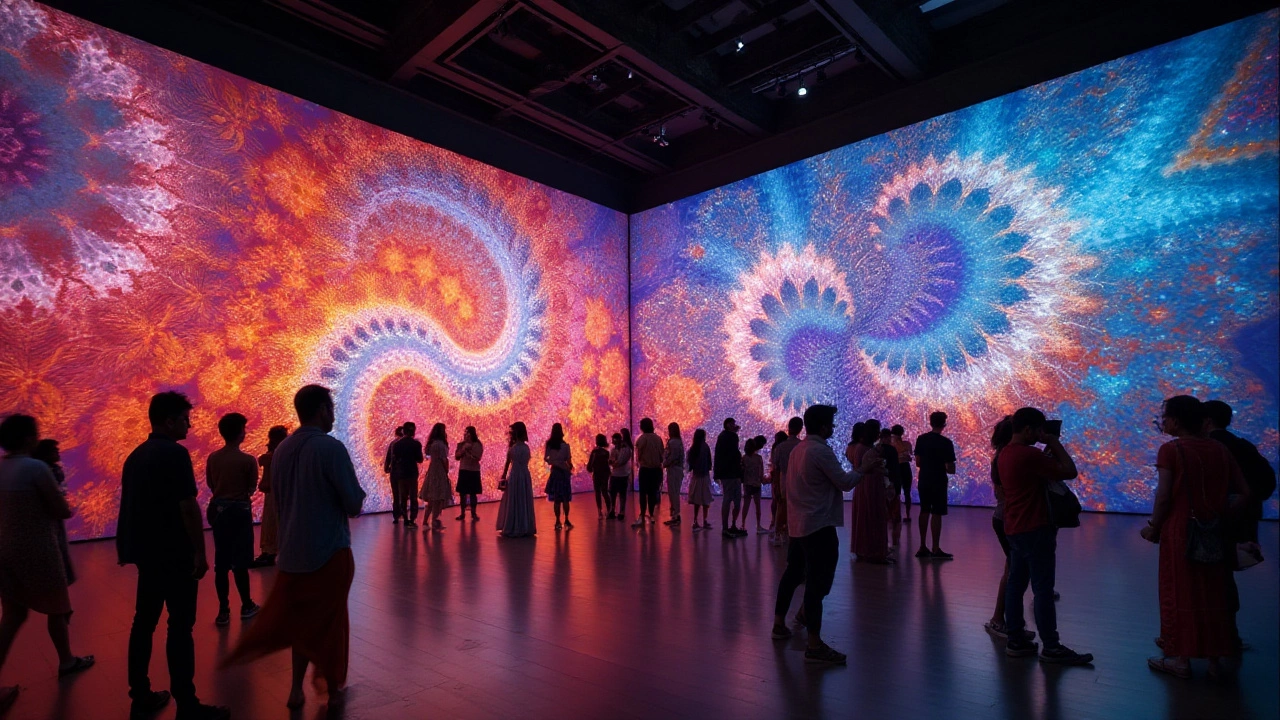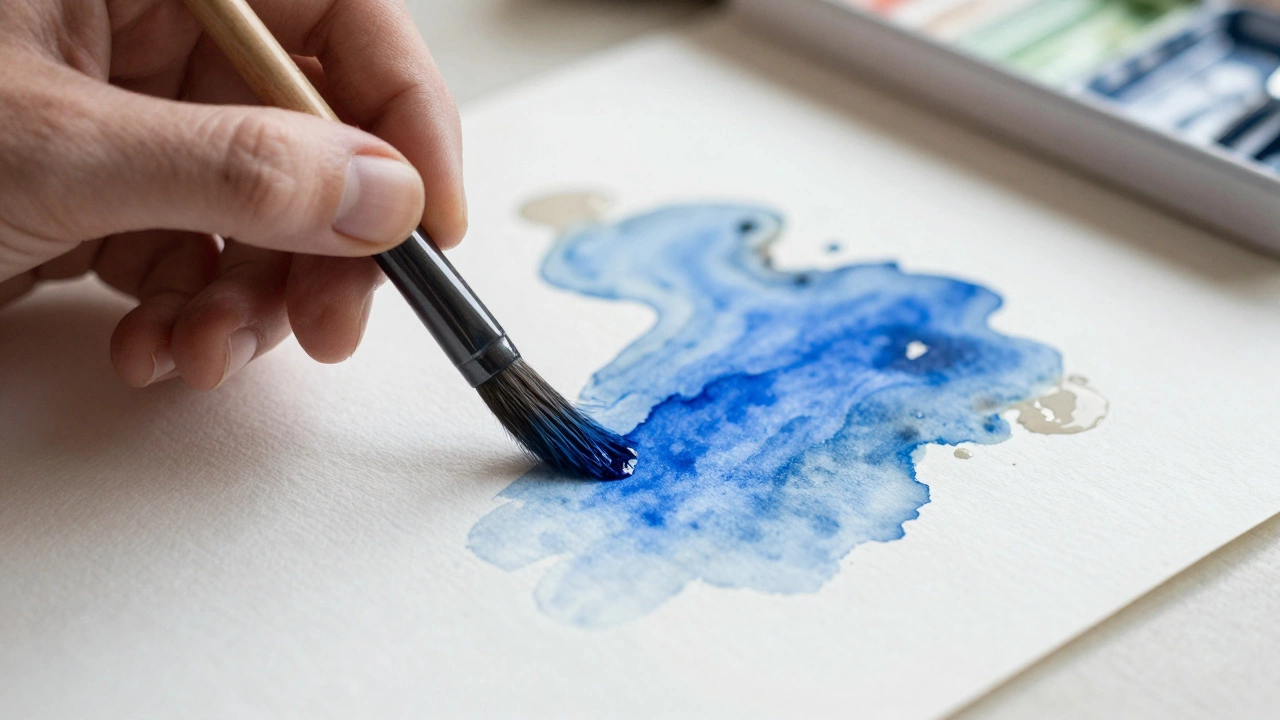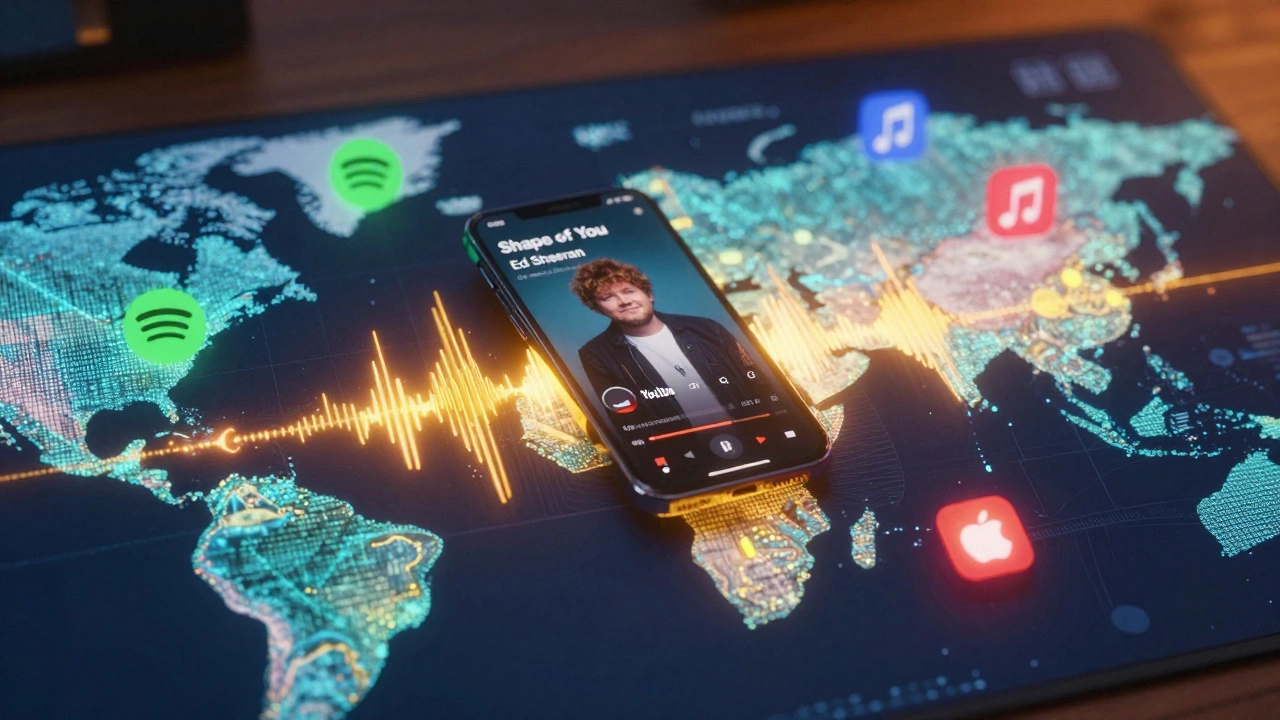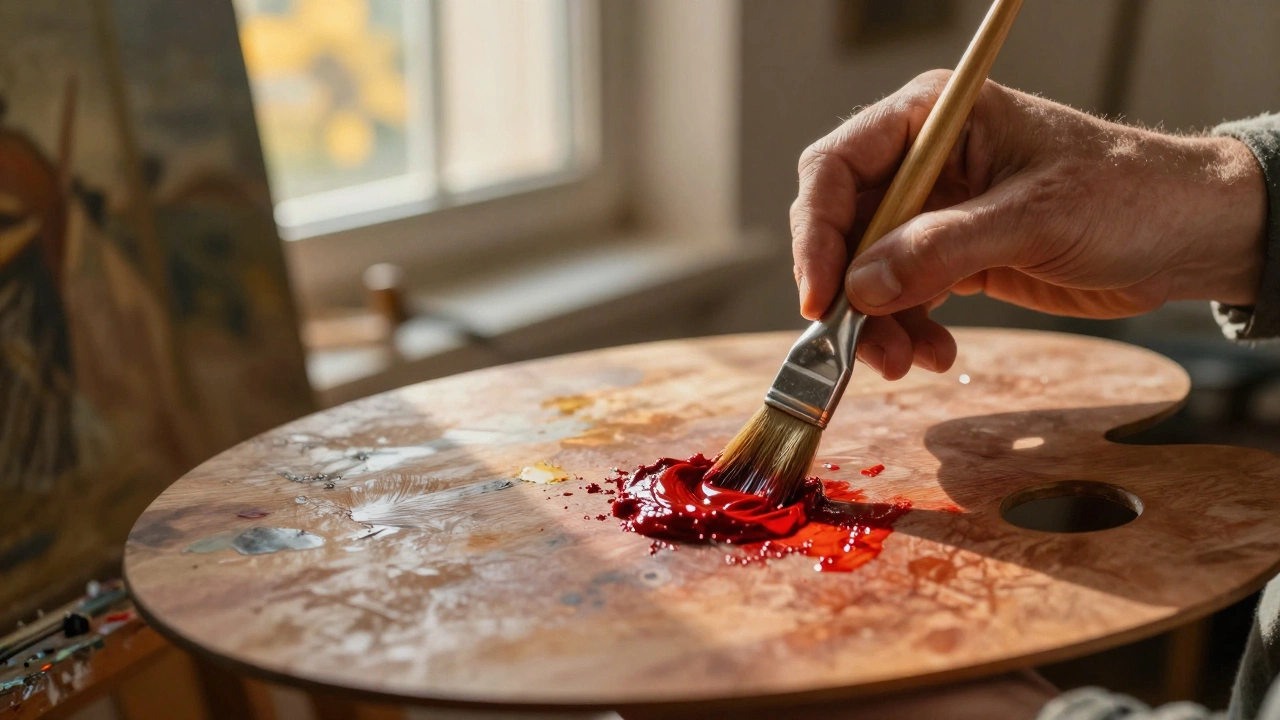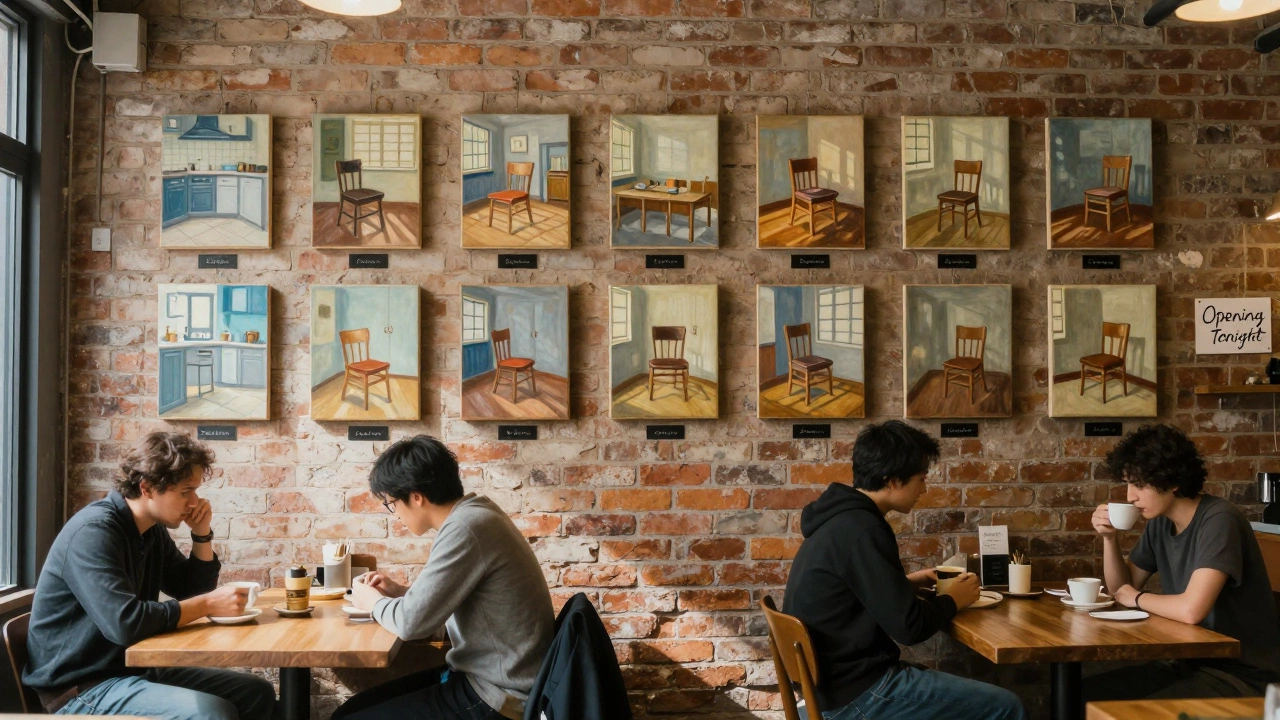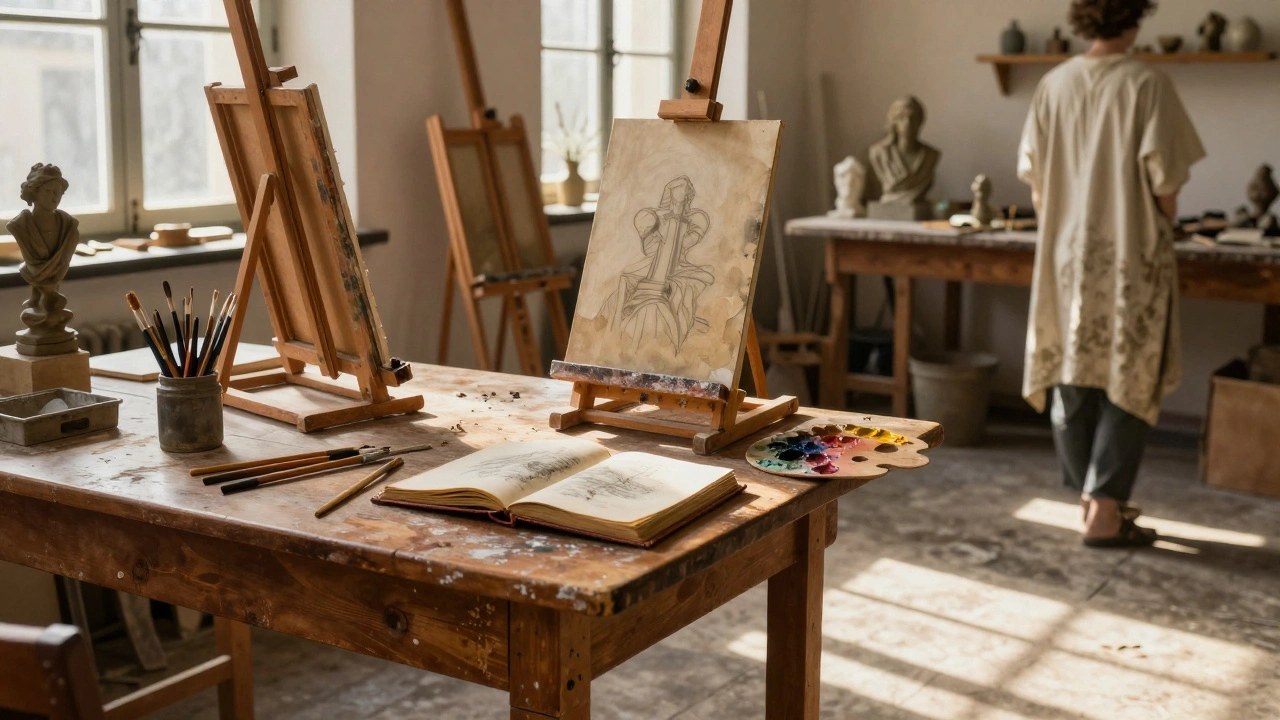Contemporary art is the heartbeat of today's creative world, thriving on innovation and the urge to explore uncharted artistic territories. This vibrant art form, stretching from the late 20th century to the current era, embodies a myriad of styles and expressions that are constantly evolving.
The journey into contemporary art unveils a fascinating array of mediums and themes, where tradition meets technology, and artist meets viewer in a space ripe for dialogue and interpretation. Let's dive into the compelling realm of contemporary art and discover what makes it the most intriguing subject of the modern era.
- Understanding Contemporary Art
- Popular Trends in Contemporary Art
- Noteworthy Contemporary Artists
- Emerging Mediums and Techniques
- Contemporary Art and Society
- Visiting Contemporary Art Spaces
Understanding Contemporary Art
Contemporary art, a term profiling creations from the late 20th century to today, is characterized by a blend of innovation, diversity, and sometimes controversy. It represents a broad spectrum of artistic practices and mediates dialogues between artists and audiences. Unlike its historical counterparts, contemporary art doesn't adhere to a singular style or philosophy. Instead, it champions pluralism, rejecting the constraints of rules and allowing artists to explore experimental techniques and mediums. As global as it is contemporary, this art form often reflects society’s complexities and artistically interprets significant cultural, political, and social issues of the era.
One fascinating aspect of contemporary art is its fluid nature and the way it embraces an ever-changing set of problems. Artists often engage in multidisciplinary methods, combining elements like technology, performance, and architecture, to create immersive experiences and works that challenge traditional views. This approach not only makes ***contemporary art*** appealing but also requires audiences to participate actively in interpreting the artwork, thus fostering a deeper understanding. According to Terry Smith, a notable art historian, "Contemporary art invites us to explore the present in the context of a globally varied genealogy of practices." Such works invite us to think critically about their context and meanings, often defying immediate comprehension but rewarding those who invest time in deciphering their messages.
Contemporary artists draw inspiration from a myriad of sources, often breaking the barriers between various disciplines. This creative freedom can be bewildering yet exhilarating for audiences and critics alike. Artists such as Banksy, Yayoi Kusama, and Ai Weiwei, have garnered immense respect due to their transformative work and representations of modern social issues through unexpected mediums. The integration of popular culture, historical references, and advanced media technology is common in ***modern art*** practices, fostering a unique dialogue across cultures and generations. This connectivity allows contemporary art to resonate globally, invigorating discussions on cultural identity while addressing universal concerns like identity, migration, and environmental change.
The evolving nature of contemporary art is evident in its institutional scholastic landscape as well. Art museums, cultural centers, and galleries worldwide provide platforms for these remarkable works. From grand installations that occupy spaces and immerse the visitor in a new reality to intimate pieces compelling introspection, contemporary art finds its home in both public and private realms. Art lovers can witness the forefront of creation where intellectual energy and raw emotions coalesce, spotlighting art’s role in capturing the essence of our time.
Popular Trends in Contemporary Art
Delve into the wondrous world of contemporary art and you'll uncover a kaleidoscope of vibrant trends. As a realm that's constantly in flux, contemporary art encompasses diverse forms that captivate the imagination. Digital art surges to the forefront of this movement, leveraging cutting-edge technology and virtual reality to create immersive, interactive experiences that were previously unthinkable. These digital installations allow artists to weave intricate narratives and push the boundaries of traditional art practices.
Then there's the eco-conscious movement, where artists are using modern art to champion environmental causes. This trend involves utilizing organic materials, recycled objects, and sustainable practices to create poignant pieces that prompt viewers to consider their ecological footprint. Artists like Agnes Denes and Olafur Eliasson harness this movement, crafting works that simultaneously celebrate and mourn the planet's delicate state. The symbolism behind their art fosters discussion and inspires change, which appeals to a growing audience attuned to global environmental concerns.
The Rise of installation Art
Installation art, which has grown exponentially over the decades, epitomizes the experiential aspect of contemporary trends. These large-scale, immersive works engulf viewers, dismantling the traditional barrier between art and observer. Notable installations such as Yayoi Kusama's mirrored infinity rooms mesmerize visitors, enveloping them in boundless repetitions of light and color. Similarly, Anish Kapoor's monumental pieces continue to captivate with their bold forms and reflective surfaces. These works are designed to evoke powerful emotions, encouraging viewers to linger and explore their own interpretations of the scene.Amidst these inventive endeavors, there's a return to authenticity and personal storytelling within art trends. Artists are increasingly drawing from their own experiences, grappling with identity, history, and culture. This approach results in deeply personal pieces that foster connections between artist and audience. Kerry James Marshall and Amy Sherald, for example, explore themes of race and identity in their work, creating evocative narratives that address social issues and establish a communal experience.
"Art should comfort the disturbed and disturb the comfortable," said Banksy, the elusive street artist whose work epitomizes this balance of provocation and solace.In sum, contemporary art encapsulates a rich tapestry of ideas and expressions, built on the foundations of past art movements whilst simultaneously forging uncharted paths. The trends that prevail today not only reflect societal shifts but also engage audiences in meaningful ways, inviting them to explore, interpret, and ultimately become a piece of the art themselves.
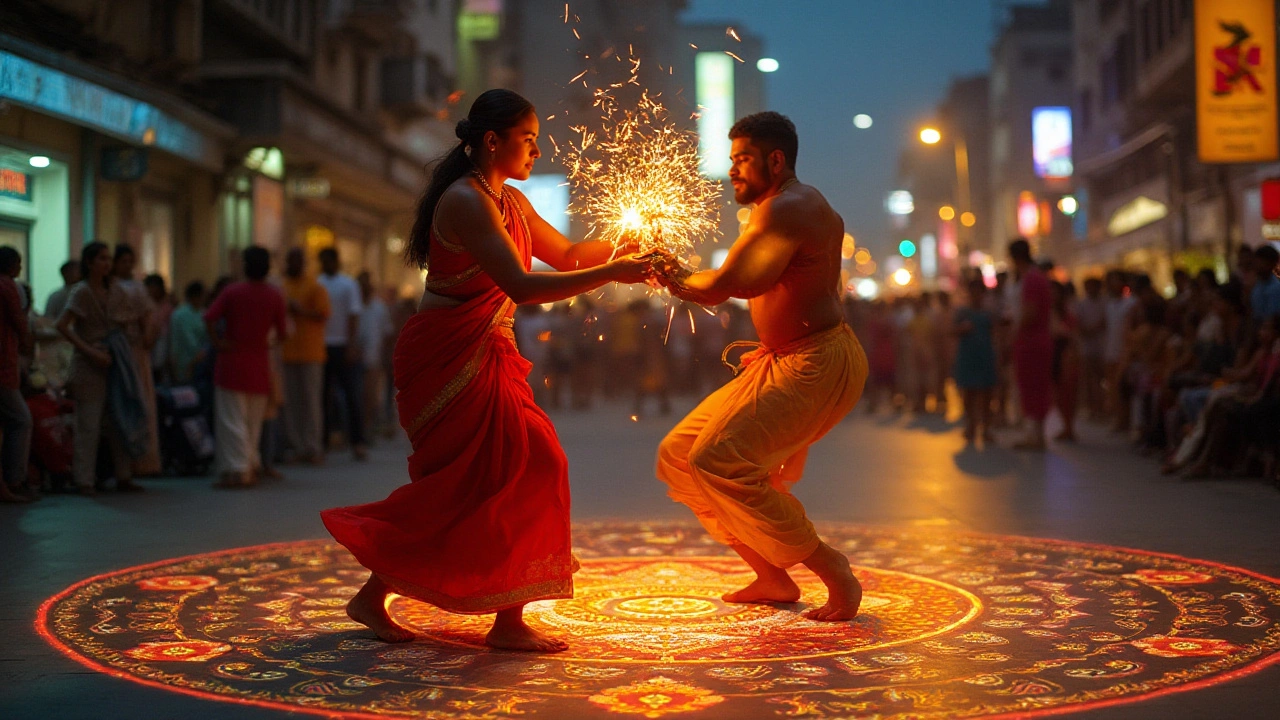
Noteworthy Contemporary Artists
In the dynamic world of contemporary art, certain artists stand out, not only for their innovative techniques but also for their ability to provoke thought and inspire change. At the forefront, Ai Weiwei has become a cultural icon, merging art with activism. His works, such as "Sunflower Seeds" and "Forever Bicycles," challenge societal norms and confront political issues directly. By using common materials to craft massive installations, Ai taps into themes of mass production and individualism, sparking dialogue across cultures. These pieces question the viewer’s role in an interconnected yet detached world, pushing the boundaries of modern expression.
Yayoi Kusama, known as the "princess of polka dots," employs her trademark style to captivate and transport audiences into a whimsical universe. Her "Infinity Mirror Rooms" create intimate experiences where perception and reality intertwine. This body of work spans decades, amplifying a unique vision and personal narrative deeply rooted in her experiences and mental health journey. For Kusama, art is therapeutic, and her immersive installations reflect a delicate balance between peace and chaos. As she often states, "I want to keep creating until the last breath I take." Her dedication is a testament to the power of art as a form of personal and universal healing.
Kara Walker disrupts traditional narratives through her powerful silhouettes and installations that explore the complexities of race, gender, and identity. Walker's infamous "A Subtlety, or the Marvelous Sugar Baby," presented in a repurposed sugar factory, confronted the dark history of slavery and exploitation. Her ability to weave historical context with personal and collective histories challenges viewers to reflect on injustices both past and present. By stripping away color and employing stark, bold contrasts, Walker’s work demands a response and encourages ongoing conversations about inequality within the art community and society at large.
Olafur Eliasson, an artist dedicated to the environment, brings nature into the gallery space with stunning effect. His installations, such as "The Weather Project" at Tate Modern, utilize natural elements like light, water, and air to highlight humanity's relationship with the environment. Eliasson's work often involves a multisensory experience, allowing viewers to encounter art that is both reflective and participatory. By bridging art and sustainability, he raises awareness about ecological issues, inviting audiences to engage in meaningful discourse about conservation and the future of our planet.
The bold vision of Jeff Koons, with his seemingly playful yet deeply conceptual works, provokes debate about the nature of art and commerce. Koons' "Balloon Dog" sculptures, mirroring childhood joy, invite complex interpretations ranging from critiques of consumer culture to explorations of form and material. By transforming everyday objects into colossal, reflective sculptures, Koons blurs the lines between high art and kitsch, prompting discourse on value and meaning in contemporary society. Despite polarizing opinions, his work undeniably influences contemporary art, raising questions about fame, creativity, and authenticity.
The realm of contemporary art is vibrant and eclectic, driven by artists who transform personal experiences into universal narratives and empower audiences to engage with the world around them. These noteworthy contemporary artists not only shape the artistic landscape but also contribute to a deeper understanding of our shared humanity. Through their diverse practices, they challenge the way we interpret art, continually inspiring future generations to push boundaries and redefine what art can be.
Emerging Mediums and Techniques
In recent years, the sphere of contemporary art has become a kaleidoscope of fresh approaches and pioneering methods that continue to redefine how we perceive creativity. With the rapid advancement of technology, artists are no longer constrained by traditional canvases or sculptural methods; instead, they are embracing digital tools, multimedia installations, and interactive experiences that engage audiences in unprecedented ways. This burgeoning landscape opens up a myriad of possibilities, allowing emerging artists to explore and exhibit in a diverse array of settings, from virtual galleries to immersive, site-specific environments.
One revolutionary trend in modern art is the use of digital technology as a primary medium. Digital installations and artworks that incorporate augmented reality (AR) and virtual reality (VR) offer transformative experiences, blurring the lines between art and audience. Artists like Refik Anadol have been at the forefront, creating mesmerizing pieces that visualize data through animated artworks. His acclaimed project, 'Melting Memories,' utilizes brainwave sensors to create visual art, making the invisible thought processes of the brain tangible and stunning to behold. This intersection of technology and art not only captivates visual senses but also invites the audience to interact more profoundly, often providing a personalized experience.
A creative surge in biological and eco-art is another fascinating avenue of exploration. This genre uses organic materials and living organisms, emphasizing the importance of environmental consciousness. Artists such as Olafur Eliasson often create works that respond to ecological crises, sparking conversations about sustainability and our relationship with nature. Eliasson’s famous piece, 'Ice Watch,' for instance, brings the melting glaciers to urban spectators by transporting chunks of glacial ice to metropolitan areas, highlighting the urgency of climate change. By integrating these natural elements, contemporary artists are crafting a new narrative that combines aesthetics with activism.
Moreover, interactive and participatory art is gaining momentum as a dynamic technique that seeks audience involvement in the creation process. Installation art often encourages viewer interaction, transforming observers into participants. Yayoi Kusama's immersive 'Infinity Mirror Rooms' invite visitors to become part of the artwork itself as they wander through the reflective installations. This movement towards an art of engagement is changing the traditional viewer-artwork relationship, cultivating a sense of community and shared experience.
In a world driven by technology, multimedia art is thriving as creatives experiment with film, sound, and performance, weaving multiple disciplines into cohesive works. The introduction of AI-generated art brings another layer to this explosion of techniques. Artists like Mario Klingemann utilize algorithms to produce compelling pieces that challenge notions of originality and authorship. While some critics question if AI can be truly creative, Klingemann and his peers view these tools as collaborators rather than threats, enabling the never-before-seen extension of human creativity.
In an interview with The Guardian, saw Klingemann sharing, "The beauty of using AI in art is its unpredictability; you never quite know what it might birth into existence."
The rise of NFT (Non-Fungible Token) culture has also cemented its place in the realm of contemporary art, enabling unique digital artworks to be bought, sold, and collected on blockchain platforms. Artists across the globe are benefiting from this technology's ability to provide verified ownership and provenance, revolutionizing how digital art is valued and collected. This addition breaks down traditional barriers, making art more accessible to those beyond the elite circles. Importantly, it speaks to the growing confluence of technology and art as creators find themselves equipped with an ever-expanding toolkit that includes both digital and tactile techniques.
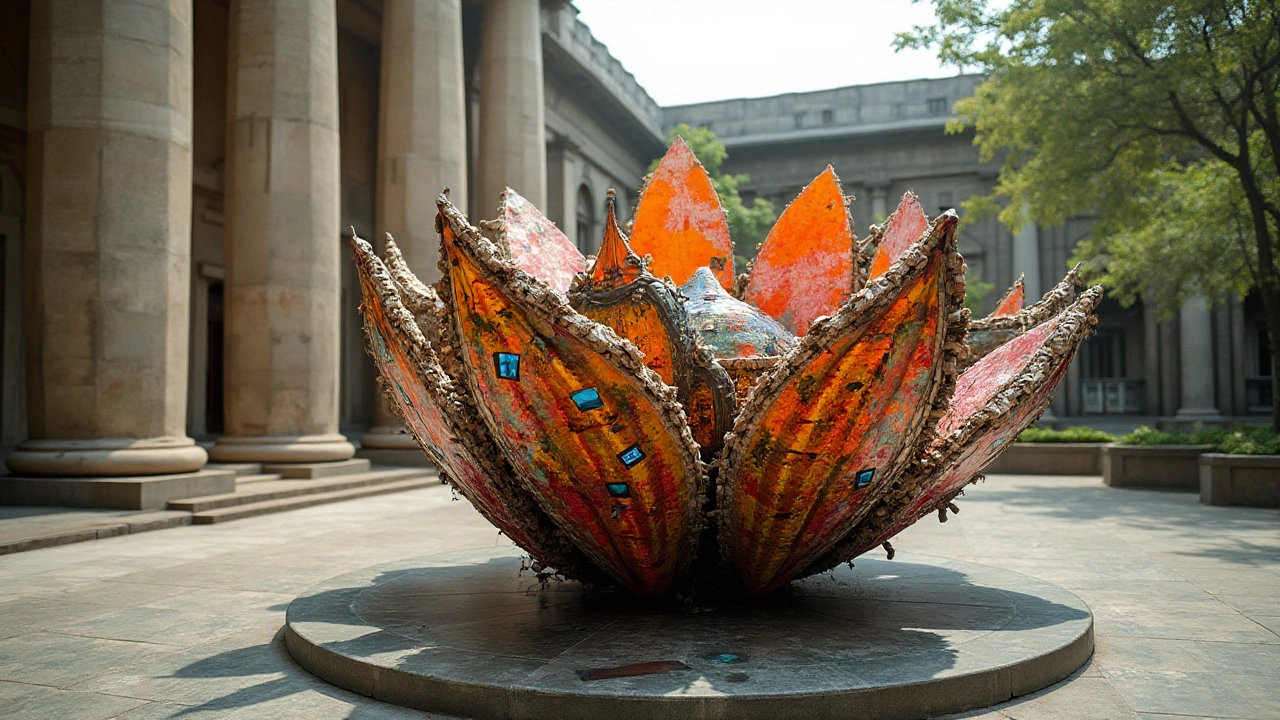
Contemporary Art and Society
Contemporary art acts as a resonating chamber for societal change, capturing the pulse of our times with an array of visual expressions. It presents a platform for artists to voice their perspectives on various issues, from political injustices to climate change. Often serving as a mirror, contemporary art reflects the complexities of modern life and challenges viewers to think critically about the world around them. One of the defining features of contemporary art is its ability to provoke thought and incite conversation, fostering empathy and understanding among diverse audiences.
The relationship between art and society proves symbiotic; just as artists draw inspiration from the social, political, and cultural contexts in which they create, their work in turn influences public opinion and inspires change. Take, for example, Ai Weiwei, a renowned Chinese artist known for his criticism of the Chinese government. Through provocative installations and thought-provoking pieces, Weiwei has brought global attention to human rights violations and the importance of freedom of expression. This exemplifies how contemporary art can serve not only as an aesthetic experience but also as a catalyst for social and political activism.
Social media has further amplified the societal impact of contemporary art, allowing artists to reach broader audiences quickly and efficiently. Platforms like Instagram and Twitter enable art lovers, critics, and casual observers alike to intersect in a virtual space where ideas are shared and discussed. This digital democratization fosters a more inclusive art community that transcends geographic and cultural boundaries. Artists such as Yayoi Kusama leverage these tools to expand their reach beyond traditional gallery spaces. Her immersive Infinity Mirror Rooms, often photographed and shared on social media, create a shared experience that connects individuals worldwide.
The Influence of Technology on Art and Society
Technology has not only changed how art is shared but has also redefined how it's created. Digital art forms, like virtual reality and interactive installations, challenge the boundaries of what art can be. These innovations allow artists to explore new dimensions of creativity and offer viewers fresh perspectives. Consider the works of teamLab, a collaborative art collective known for blending art, science, and technology to create immersive experiences. Their digital art installations rely on real-time data and participant interaction, making the viewer an integral part of the artwork itself. This kind of experiential art underscores the shift in how contemporary art engages with society.The importance of contemporary art in society cannot be overstated. It acts as a witness to history, chronicling the shifts in societal values and highlighting issues that often go unnoticed. As an ever-evolving field, contemporary art continuously reinvents itself in response to the changing world, ensuring its relevance in the cultural landscape. As Sol LeWitt once said, "The ideas need not be visual; they can be words, pictures, facts, anything." This notion speaks to the versatility of contemporary art and its boundless potential to convey the ideas and emotions shaping our society.
Visiting Contemporary Art Spaces
Stepping into a contemporary art space is akin to entering a portal where the past meets the future, and the boundaries of creativity are constantly redefined. It is not just about looking at art but experiencing it — these venues offer an opportunity to connect with contemporary art in a profound way. From traditional white-cube galleries to eclectic art collectives showcasing dynamic and revolutionary pieces, contemporary art spaces are designed to engage audiences at every level. Each visit holds the potential for a new perspective, as curators often rotate exhibitions to reflect the pulse of modern art and its current trends. This ensures a fresh and evolving engagement with art that resonates with both current societal issues and timeless themes.
The role of physical space in experiencing contemporary art cannot be overstated. Whether through a labyrinthine layout that leads viewers on a curated journey or open floors that encourage free exploration, the presentation of artworks is as crucial as the works themselves. Iconic institutions like the Tate Modern in London or the Museum of Modern Art in New York often play with architectural design to foster a dialogue between the artwork and the viewer. The interplay of light, space, and artwork invites viewers to pause, reflect, and engage in a dialogue with the piece. These spaces are not just exhibits of creativity but are classrooms for cultural exchange and learning.
Local and global art fairs have gained tremendous popularity, drawing crowds who are eager to experience the latest in artistic innovation. Events like Art Basel or the Venice Biennale showcase a range of contemporary art, offering a platform for both established artists and emerging talents. Within these vibrant environments, the cross-pollination of ideas is palpable. Visitors can witness firsthand how artists from different cultures and backgrounds respond to shared global challenges and aspirations through their art. This aspect of global art fairs encourages a sense of community and dialogue, reflecting on how contemporary art is a mirror to our world's complexities and beauties.
An important factor to consider when visiting any contemporary art space is the presence of interactive installations and digital art forms. More and more frequently, artists incorporate technology into their works, creating immersive experiences that go beyond passive viewing. From virtual reality exhibitions to sound and light installations, these spaces invite visitors to engage all of their senses. These works challenge us to look at art, and often ourselves, in new ways. As the artist Olafur Eliasson eloquently states, these interactive pieces urge us to "go beyond the urge to name and classify, and instead just be within the artwork itself."
For those new to contemporary art, visiting these spaces can be an eye-opening and transformative experience. It is valuable to approach each piece with an open mind and a willingness to engage in conversation, sometimes with strangers, sometimes within ourselves. Many galleries and museums offer guided tours or audio guides to provide context and insight into the art and artist's intent. Additionally, attending artist talks, workshops, and seminars can provide a deeper understanding and appreciation of contemporary art. These opportunities can enhance your visit and add layers of meaning to your experience.
Ultimately, contemporary art spaces offer a unique lens through which we can view the world. They invite us to reflect on the present moment and imagine possible futures. Whether you're an avid contemporary art enthusiast or a curious newcomer, exploring these spaces can enrich your understanding of art and culture. As you wander through halls filled with provocative pieces and innovative installations, remember that the journey is often as important as the destination.
